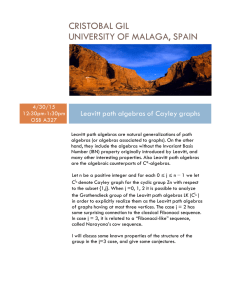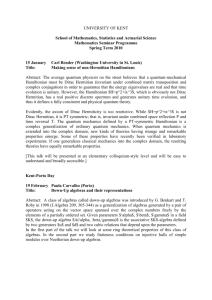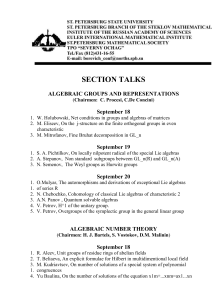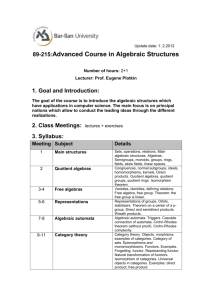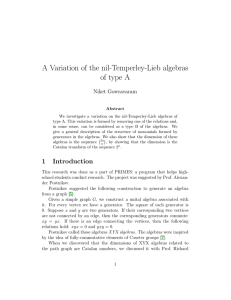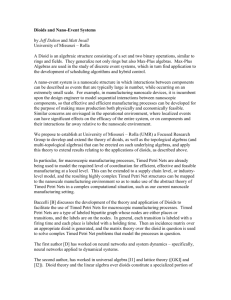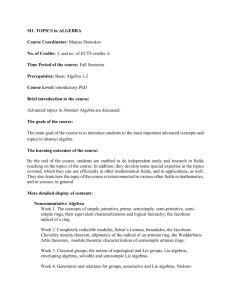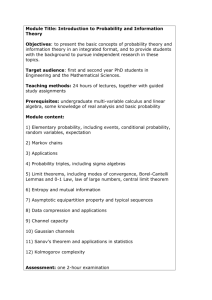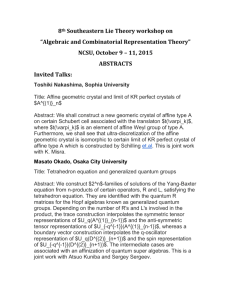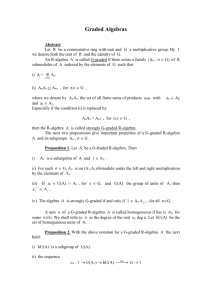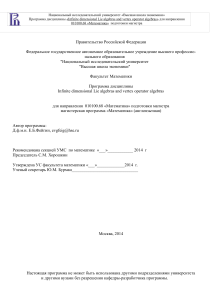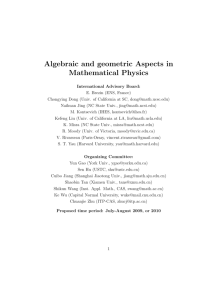The Four- and Eight-squares Theorems, and Vector Products Given
advertisement
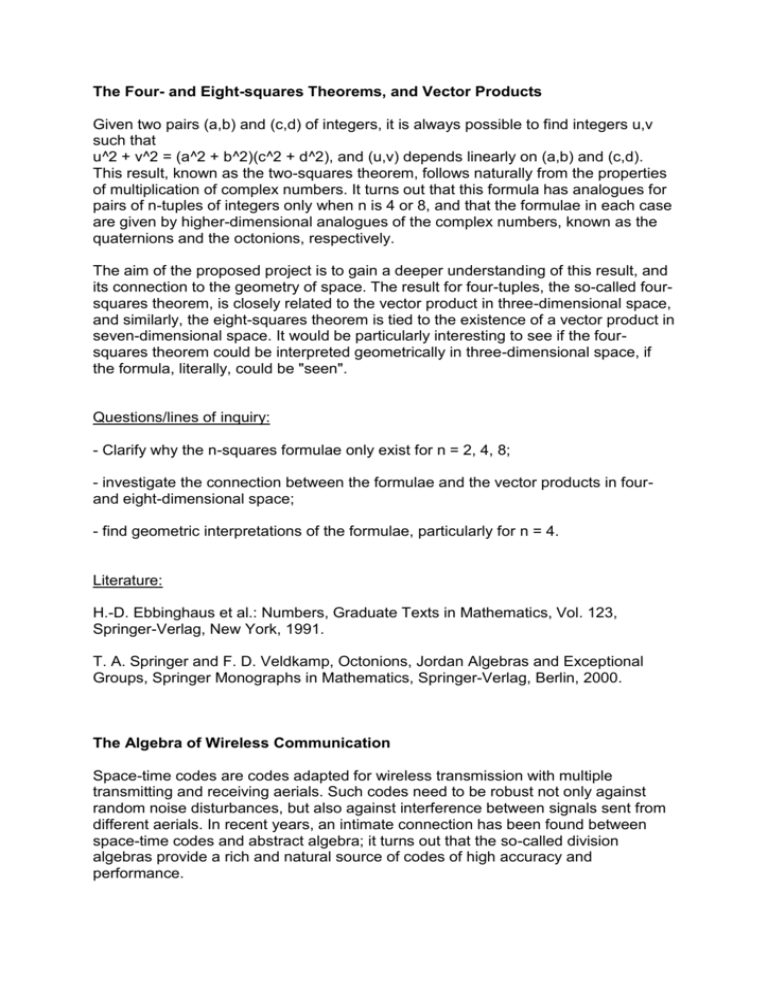
The Four- and Eight-squares Theorems, and Vector Products Given two pairs (a,b) and (c,d) of integers, it is always possible to find integers u,v such that u^2 + v^2 = (a^2 + b^2)(c^2 + d^2), and (u,v) depends linearly on (a,b) and (c,d). This result, known as the two-squares theorem, follows naturally from the properties of multiplication of complex numbers. It turns out that this formula has analogues for pairs of n-tuples of integers only when n is 4 or 8, and that the formulae in each case are given by higher-dimensional analogues of the complex numbers, known as the quaternions and the octonions, respectively. The aim of the proposed project is to gain a deeper understanding of this result, and its connection to the geometry of space. The result for four-tuples, the so-called foursquares theorem, is closely related to the vector product in three-dimensional space, and similarly, the eight-squares theorem is tied to the existence of a vector product in seven-dimensional space. It would be particularly interesting to see if the foursquares theorem could be interpreted geometrically in three-dimensional space, if the formula, literally, could be "seen". Questions/lines of inquiry: - Clarify why the n-squares formulae only exist for n = 2, 4, 8; - investigate the connection between the formulae and the vector products in fourand eight-dimensional space; - find geometric interpretations of the formulae, particularly for n = 4. Literature: H.-D. Ebbinghaus et al.: Numbers, Graduate Texts in Mathematics, Vol. 123, Springer-Verlag, New York, 1991. T. A. Springer and F. D. Veldkamp, Octonions, Jordan Algebras and Exceptional Groups, Springer Monographs in Mathematics, Springer-Verlag, Berlin, 2000. The Algebra of Wireless Communication Space-time codes are codes adapted for wireless transmission with multiple transmitting and receiving aerials. Such codes need to be robust not only against random noise disturbances, but also against interference between signals sent from different aerials. In recent years, an intimate connection has been found between space-time codes and abstract algebra; it turns out that the so-called division algebras provide a rich and natural source of codes of high accuracy and performance. In this project, we will examine the mathematics behind the construction of spacetime codes. This includes an overview of research in the field in recent years, and possibly also exploring some new directions of research based on a generalised concept of a division algebra, which seems well suited for the demands of code construction. Questions/lines of inquiry: - Understand the concept of a space-times code, and the criteria that make them suitable for MIMO (multiple-input multiple-output) transmission; - understand the algebraic structures used to construct space-time codes: algebraic number fields, associative and non-associative division algebras; - study how associative division algebras can be used to construct perfect spacetime codes; - explore ways in which space-time codes can be obtained from non-associative division algebras. Literature: G. Berhuy, F. Oggier: An introduction to central simple algebras and their applications to wireless communication. Mathematical Surveys and Monographs, 191. American Mathematical Society, Providence, RI, 2013. S. Pumplün and T. Unger: Space-time block codes from nonassociative division algebras. Adv. Math. Commun. 5 (2011), no. 3, 449–471. B. A. Sethuraman: Division algebras and wireless communication. Notices Amer. Math. Soc. 57 (2010), no. 11, 1432–1439. Real Division Algebras The integers are included in the rational numbers, which embed in the reals, and the reals may be extended to the complex numbers… but what happens next? Are there some "hyper-complex" numbers of which the ordinary complex numbers are a subset? The answer may be either positive or negative, depending on whom you ask, and both viewpoints have their merit. While strong case can be made for the idea that the complex numbers are the "crown" of the number system, it is equally true that there are several natural ways to view the complex numbers as sitting inside some higher-dimensional system of "numbers", and that these structures both natural and useful in mathematics and physics. The idea of this project is to make acquaintance with the classical instances of "hyper-complex numbers", that is the quaternion and octonion algebras, and then choose a direction of further inquiry. This may be the classification theorems for associative and alternative real division algebras (which, simply speaking, tell you why and in which respect the quaternions and octonions are the "best" hypercomplex numbers), study of more general classes of division algebras, or applications to other fields (e.g. the use of quaternions in computer animation). Questions/lines of inquiry: Beyond the understanding of the basic concepts and theory of real division algebras, some possible themes are - the classification theorems by Frobenius and Zorn, of associative respectively alternative real division algebras; - division algebras over other fields, the Brauer group; - general division algebras over the real numbers; - quaternions in computer animation. Literature: H.-D. Ebbinghaus et al.: Numbers, Graduate Texts in Mathematics, Vol. 123, Springer-Verlag, New York, 1991. Schafer, Richard D. An introduction to nonassociative algebras. Corrected reprint of the 1966 original. Dover Publications, Inc., New York, 1995. x+166 pp.
